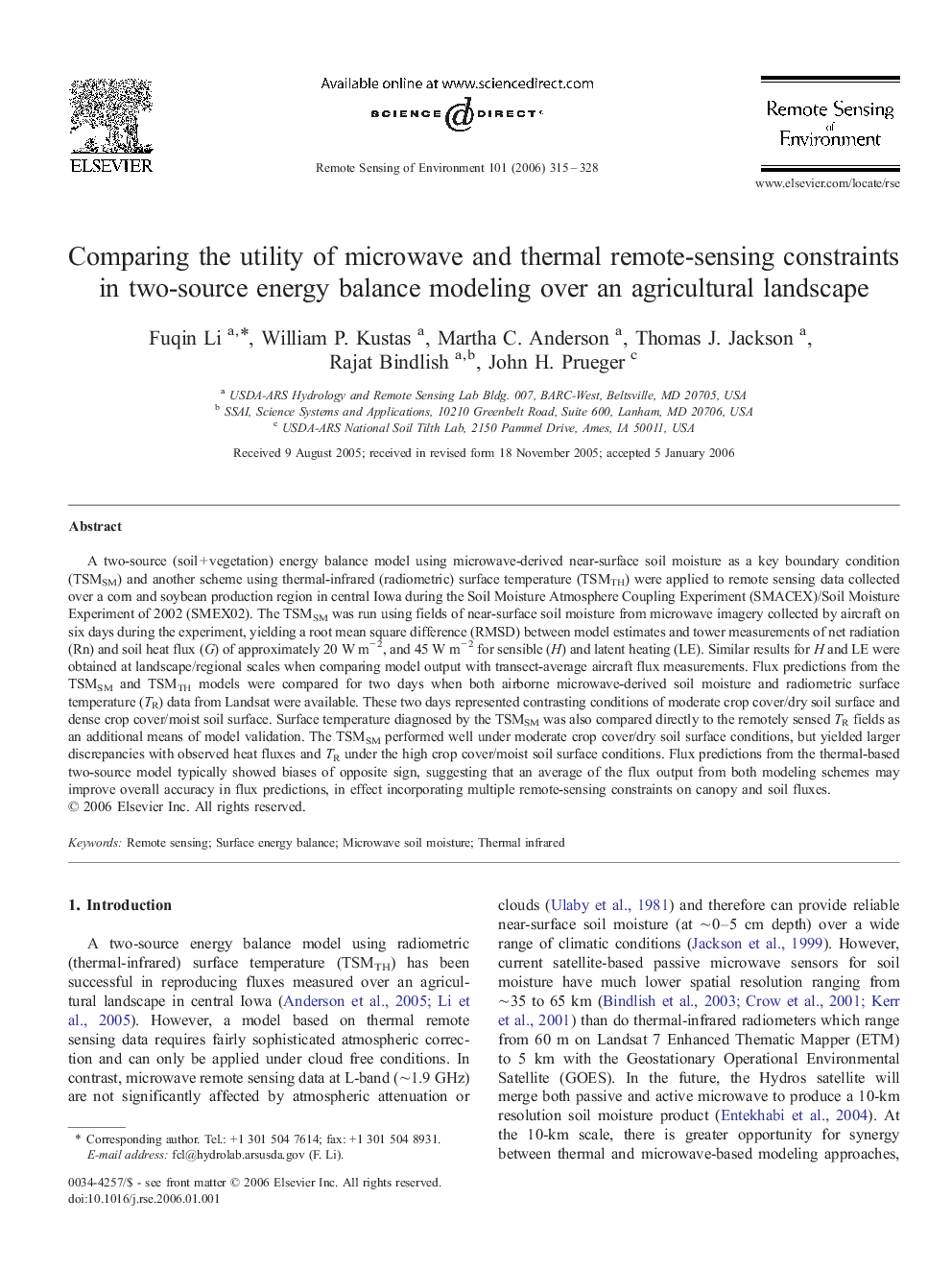| کد مقاله | کد نشریه | سال انتشار | مقاله انگلیسی | نسخه تمام متن |
|---|---|---|---|---|
| 4461093 | 1621371 | 2006 | 14 صفحه PDF | دانلود رایگان |

A two-source (soil + vegetation) energy balance model using microwave-derived near-surface soil moisture as a key boundary condition (TSMSM) and another scheme using thermal-infrared (radiometric) surface temperature (TSMTH) were applied to remote sensing data collected over a corn and soybean production region in central Iowa during the Soil Moisture Atmosphere Coupling Experiment (SMACEX)/Soil Moisture Experiment of 2002 (SMEX02). The TSMSM was run using fields of near-surface soil moisture from microwave imagery collected by aircraft on six days during the experiment, yielding a root mean square difference (RMSD) between model estimates and tower measurements of net radiation (Rn) and soil heat flux (G) of approximately 20 W m− 2, and 45 W m− 2 for sensible (H) and latent heating (LE). Similar results for H and LE were obtained at landscape/regional scales when comparing model output with transect-average aircraft flux measurements. Flux predictions from the TSMSM and TSMTH models were compared for two days when both airborne microwave-derived soil moisture and radiometric surface temperature (TR) data from Landsat were available. These two days represented contrasting conditions of moderate crop cover/dry soil surface and dense crop cover/moist soil surface. Surface temperature diagnosed by the TSMSM was also compared directly to the remotely sensed TR fields as an additional means of model validation. The TSMSM performed well under moderate crop cover/dry soil surface conditions, but yielded larger discrepancies with observed heat fluxes and TR under the high crop cover/moist soil surface conditions. Flux predictions from the thermal-based two-source model typically showed biases of opposite sign, suggesting that an average of the flux output from both modeling schemes may improve overall accuracy in flux predictions, in effect incorporating multiple remote-sensing constraints on canopy and soil fluxes.
Journal: Remote Sensing of Environment - Volume 101, Issue 3, 15 April 2006, Pages 315–328